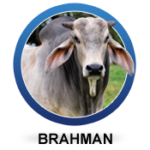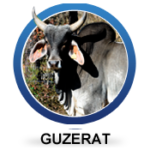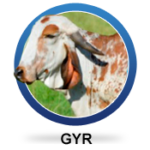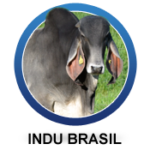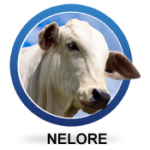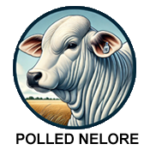POLLED BRAHMAN
The American Brahman breed includes both horned and polled (naturally hornless) cattle. While the traditional Brahman cattle typically have upward-curving horns, selective breeding programs have developed polled Brahmans, which offer several advantages to beef producers.
Polled American Brahman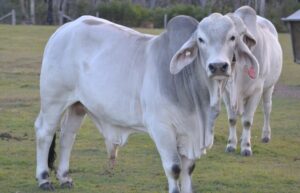
Polled Brahman cattle have been selectively bred to maintain all the desirable traits of the breed—heat resistance, insect resistance, longevity, and adaptability—while eliminating the need for dehorning. The polled gene is a dominant trait, meaning that when a polled Brahman is bred to a horned Brahman, a percentage of the offspring will also be polled.
Advantages of Polled Brahman Cattle
- Improved Handling & Safety – Without horns, polled Brahmans are easier to manage, reducing the risk of injury to handlers, other cattle, and themselves.
- Reduced Stress & Labor Costs – Dehorning is a standard management practice for horned cattle, but it can be stressful for the animal and requires extra labor and veterinary oversight. Polled Brahmans eliminate the need for dehorning.
- Market Demand & Value – Many commercial cattle operations prefer polled genetics to reduce handling risks. As a result, polled Brahmans often bring a premium price in breeding programs.
- Retaining Purebred Status – The American Brahman Breeders Association (ABBA) recognizes polled Brahmans as purebred, allowing breeders to maintain genetic integrity while improving herd management.
Polled Brahmans have gained popularity, especially in North America, Australia, and South America, where beef operations prioritize low-maintenance, high-performance cattle. The development of elite polled bloodlines ensures that breeders no longer have to choose between the benefits of Brahman genetics and the convenience of polled cattle.
1
2
3
4
5
6
Copyright © 2025 Bos Indicus International
Contact
P.O. Box 118
Butler, MO 64730
Email: office@bosindicusinternational.org
Phone: 816-738-4179

